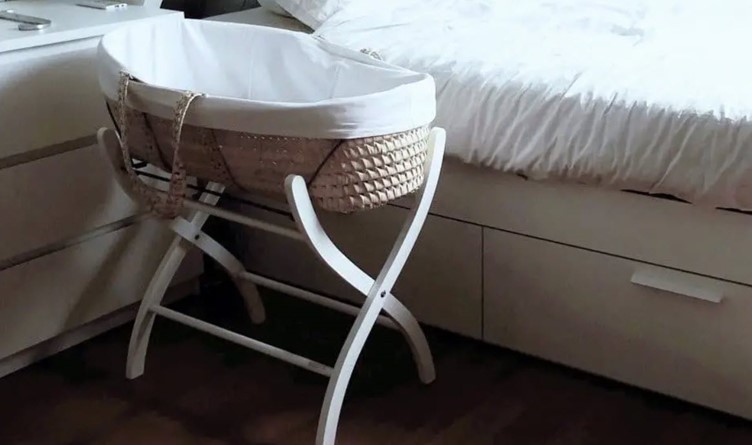How Long a Baby Can Sleep in a Bassinet?
Nursery furniture is essential in the early stages of childcare because bassinets are among the first pieces of furniture a parent chooses to put their baby to sleep. However, bassinets can't be used for babies up to a certain age.
Bassinets are usually kept beside the parent's bed so that they can keep a close eye on the baby whenever required. There are many benefits to using bassinets for babies, but it is crucial to have knowledge on how long a baby can sleep in a bassinet.
Although bassinets are not too small nor too big, they are designed for babies up to 6 months and have varying maximum weight limits. The average baby will start to outgrow their bassinet after 6 months, and it is essential to know when to transition from a bassinet to a crib.
Importance of a Bassinet
Babies sleep a lot, especially newborns; therefore, it is crucial to know what kind of furniture is required to allow the baby to sleep in a comfortable and safe space. Investing in a bassinet comes with a lot of benefits for the baby compared to buying a crib.
Bassinets are relatively smaller than cribs and therefore take up less space in a room. Due to their small size, bassinets are also easily portable and can be moved by the parent from one room to another at their convenience.
The exciting thing about bassinets is that they are equipped with various features depending on the model. Some models have adjustable height options. Others can be ordinary bassinet and a bedside sleeper. The higher-end bassinets are even equipped with innovative features such as the self-rocking function and keep track of Baby's sleep cycle.
Babies prefer to sleep in snug corners, and bassinets are perfect for offering that kind of comfort in Baby's environment.
When do I Move My Baby from a Bassinet to a Crib?
Although there is no strict rule on when to transition your baby from a bassinet to a crib, it is good to know how long a baby can sleep in a bassinet. Any healthy growing baby will eventually outgrow the bassinet, and knowing when to transition to a crib is highly advised.
1.) Check the Weight Limit of the Bassinet
Parents should be checking the weight limit of the side bed baby sleeper that they already have or plan on purchasing is important. Most bassinets mention the maximum weight it can handle.

Some bassinets offer a weight limit of 20 pounds, providing more time for transition the baby to a crib.
On the other hand, some models have a lower weight limit, and it is best to transition the baby to a crib sooner. Depending on the bassinet's weight limit, the parent can plan accordingly for transitioning to a crib.
2.) If the Baby Starts to Outgrow the Bassinet
The majority of the bassinets available in the market are designed for babies up to 6 months of age, and they will become too uncomfortable for the average 6-month-old baby.

If your baby is smaller than average 6-month-old babies, they still have some time to sleep in a bassinet for a few more months. However, if your baby has started to roll over, it is best to invest in a crib to prevent your babies from feeling trapped and rolling into the sides of the bassinets.
3.) The baby can Get Up to their Hands and Knees
The walls of the bassinets are comparatively shallow than the walls of the cribs. Once your baby is big enough to get up on their hands and knees, it is best to transition them to a crib to prevent any severe injuries.

The more they can move around, the higher the chances are of them trying to get out of the bassinet and risk hurting themselves.
How do I Transition My Baby to a Crib?
The process of transitioning your baby from a bassinet to a crib can be very tedious if you don't do it properly. Some babies don't notice the change in the sleeping environment and may not be bothered by it, while some babies can get confused by the change in setting.
Following the tips provided below will help the process go smoothly before making the change.
Tips to Follow
- Prepare the crib beforehand by ensuring that the mattress is comfortable and is not too soft or too firm for the baby.
- Ensure that there are no toys or blankets in the crib that will bother your baby during night time.
- Prepare your baby to get used to the crib by letting them take naps in them to get familiarized with the new environment.
- Using sound machines that emit white noise is a good option as it mimics the sounds made in the womb.
- Using baby monitors to keep an eye on your baby in case they require immediate attention.
Still have a query in mind, let me know in the comment section; I love answering your questions.



